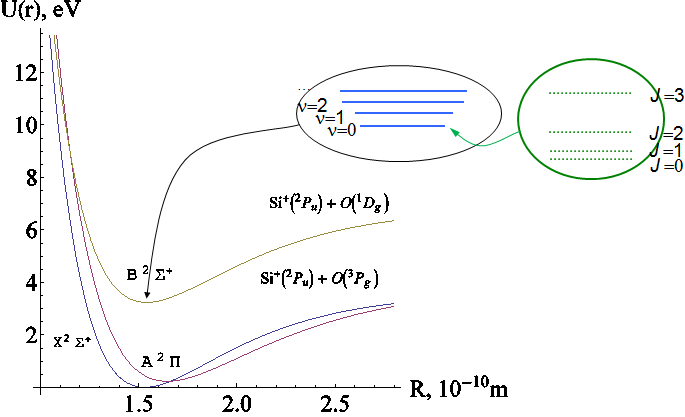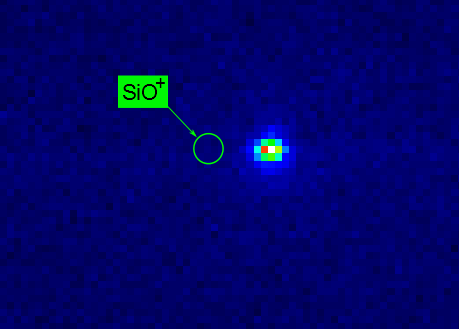Dzmitry Matsukevich's Group |

|
Our current research is focused on the preparation and detection of the quantum states of the SiO+. Due to almost diagonal Frank-Condon factors for certain transitions at accessible transition wavelengths, SiO molecular ions offer an ideal testbed for the development of methods to control and detect quantum states of molecular ions.
Quantum logic spectroscopy is a promising technique for these applications[1,2], since it allows detection and manipulation of molecular and atomic species that don't have closed cycling transitions and cannot be easily detected using conventional resonance fluorescence methods. Instead of collecting light scattered from the molecule, the quantum logic technique relies on detection and manipulation of the molecular ions confined in the trap together with an atomic ion (Yb+ in our case). In this configuration, a change of the molecular internal state can be accompanied by the change of its motional state. Due to Coulomb interaction between the ions, this motion will be shared between both of them and can be detected with the standard techniques that are widely used for ion trap quantum computations.
We are currently working[3,4,5] on the experimental implementation of the quantum logic techniques and exploring applications of molecular ions to the precision measurements and quantum information processing.

Fig. 1. Potential energy curves and typical energy scales for low lying energy levels of the silicon monoxide ion.

Fig. 2. Detection of the Silicon monoxide ion